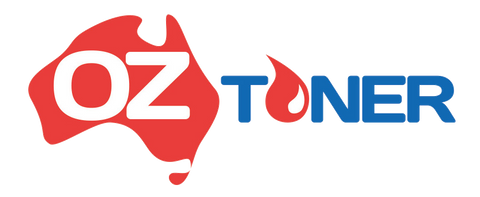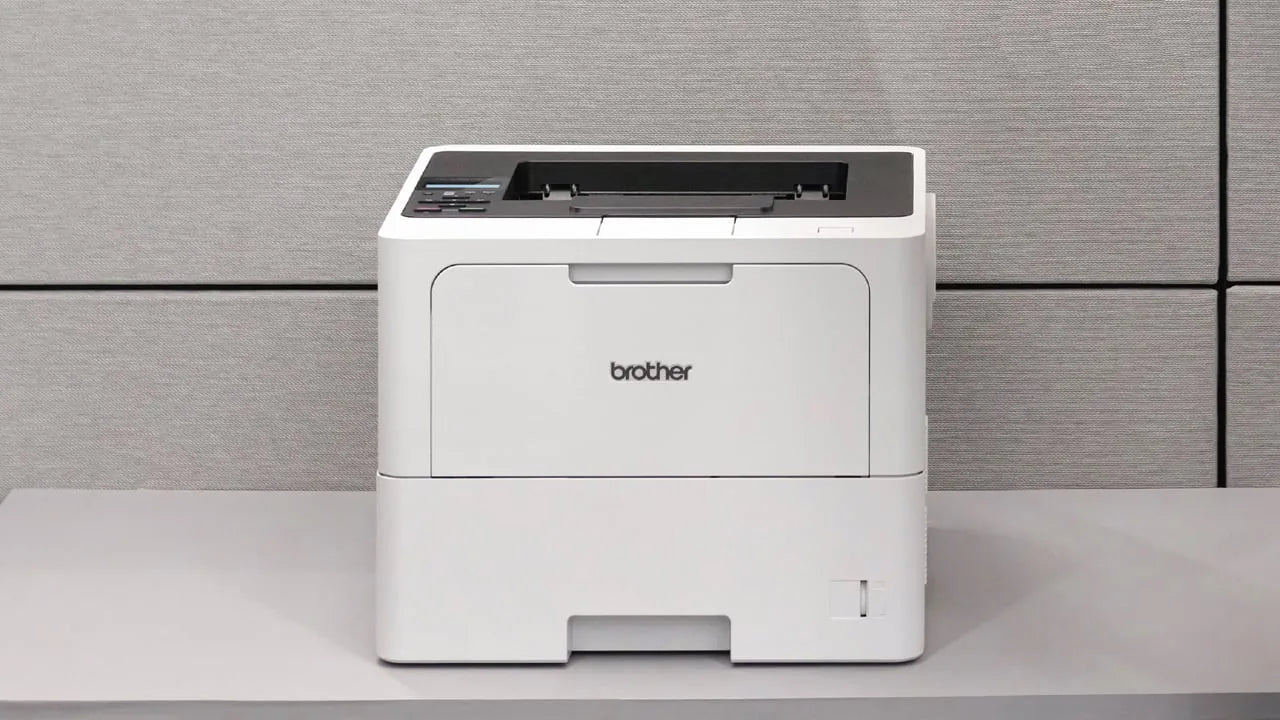-
Pros
- Running cost as low as 1.1 cents per page
- 620-sheet paper capacity, expandable to 1,660 sheets
- Auto duplexing
- Ethernet and Wi-Fi network connection options
-
Cons
- Slower duplex printing speed
Brother HL-L6210DW Specs
| Color or Monochrome | Monochrome |
| Connection Type | Ethernet |
| Connection Type | USB |
| Connection Type | Wi-Fi |
| Connection Type | Wi-Fi Direct |
| Cost Per Page (Color) | NA |
| Cost Per Page (Monochrome) | 1.1 cents |
| Maximum Scan Area | N/A |
| Maximum Standard Paper Size | Legal |
| Monthly Duty Cycle (Maximum) | 125,000 |
| Monthly Duty Cycle (Recommended) | 8,000 |
| Number of Ink Cartridges/Tanks | 1 |
| Number of Ink Colors | 1 |
| Print Duplexing |
| Printer Input Capacity | 520 + 100 expandable to 1,660 |
| Rated Speed at Default Settings (Color) | NA |
| Rated Speed at Default Settings (Mono) | 50 ppm |
| Scanner Optical Resolution | N/A |
| Scanner Type | N/A |
| Standalone Copier and Fax | N/A |
| Type | Printer Only |
The Brother HL-L6210DW mono laser printer is stiff competition for the Canon LBP246dw and LBP247dw, two high-scoring models in our tests, but it's not quite a direct competitor to them. The Canon printers are among our favorites for a heavy-duty printer for a small-to-midsize office or workgroup. The HL-L6210DW ($299.99) is in the same price class, but its higher paper capacity puts it in the overlapping category of workhorse printer for a midsize-to-large office or workgroup. It misses out on an Editors' Choice designation, because it was slower than either Canon model for duplex (two-sided) printing in our tests, but it was faster for simplex (one-sided) printing. Depending on how much you print in duplex, it could be the faster printer for your office.
Design: Easy Setup for a Heavy-Duty Printer
Weighing in at 26.8 pounds, the HL-L6210DW is just heavy enough that you may want some help moving it into place. It's also just bulky enough, at 11.4 by 14.7 by 15.3 inches (HWD) with trays closed, that you may not feel comfortable sharing a desk with it. Once in place, however, physical setup is easy. The printer ships with its toner cartridge inside and already mounted in the separate drum unit. Simply remove the packing materials, including from the toner and the drum unit, slide the unit back into the printer, and connect the power cord.
Paper handling starts with auto-duplexing and a 620-sheet capacity divided into a 520-sheet drawer plus a 100-sheet multi-purpose tray. If that's not enough, you can add up to two additional 520-sheet drawers ($203.99 each) for a total 1,660-sheet capacity, or up to three 250-sheets drawers ($176.49 each) for a total 1,340-sheet capacity. The first choice holds more paper, while the second lets you load up to five different types and sizes of paper at the same time. Brother also sells a 15.7-inch-high cabinet stand ($241.99) to convert the printer and any additional trays into a floor-standing unit.
 (Credit: Brother)
(Credit: Brother)The rating for maximum monthly duty cycle is a hefty 125,000 pages, a number that's basically a measure of the printer's ruggedness, and is defined as the most you can print in a month without shortening printer life in terms of the total number of pages it can print. The recommended monthly duty cycle is up to 8,000 pages. Keep in mind that each side of each sheet counts as a page for duty-cycle purposes, so if you set the printer up with its maximum capacity and print even a low percentage of duplex pages, 8,000 pages could easily translate to adding paper less often than once a week.
Brother doesn't provide an installation disc, but the Quick Setup guide includes URLs for downloading the software and for both the online and downloadable manual. The site automatically recognized that I was running the 64-bit version of Windows 10, and gave a choice of downloading the driver alone or the recommended Full Driver and Software package, which I picked.
 (Credit: Brother)
(Credit: Brother)As is typical, the installation is mostly automated, pausing to give the choice of an Ethernet, Wi-Fi, or USB connection. I chose Ethernet, confirmed that it found the right printer on my network, and then watched while it set up the connection without any issues. One welcome touch is that it also pauses to ask whether to set the default for the driver to simplex or duplex, instead of being locked into one choice that you may need to change later. The downloads page includes options for a PCL6 driver and a BR-Script driver (Brother's PostScript emulation), should you need either in your office. For mobile printing, the Brother Mobile Connect Print app is available for downloading from the Apple App Store and from Google Play.
I ran into one minor annoyance in setup. The last step, a firmware update, requires entering a password. You can find it on a label on the back of the printer, but it may not be easy to get to at that point. It would be helpful if the Quick Setup Guide suggested you look for and write down the password early in the physical setup, so you can have it handy when you need it.
 (Credit: Brother)
(Credit: Brother)Running cost for the HL-L6210DW is a strong point, which is particularly important for a printer that's designed to print lots of pages. Brother offers a choice of four cartridge capacities, so you get to choose between buying a cheaper cartridge or getting a lower running cost. The costs per page range from 2.6 cents for the lowest yield (3,000 pages) to just 1.1 cent for the highest (18,000 pages). As always, you'll want to consider the total cost of ownership, not just running cost, when making comparisons, as discussed in our guide to how to save money on your next printer. But note that if you're printing thousands of pages per month, just a 1-cent savings per page will quickly make up for a $100 difference in initial price.
One important extra the HL-L6210DW offers that demands mention is secure printing. The feature lets you send a file to the printer, but not print it until you enter a PIN at the front panel. In a busy office, this avoids the risk of someone seeing sensitive documents sitting in the output tray before you retrieve them.
Testing the HL-L6210DW: Fast for Simplex, Slower for Duplex
For performance testing, I compared the HL-L6210DW to three Canon models: the LBP246dw, LBP247dw, and LBP236dw. The last has been discontinued, but it earned an Editors' Choice as our top pick for the category and is still available, though scarce, at this writing. All four were tested over a network using our standard testbed and were connected by Ethernet. Results were mixed. Which printer, if any, you consider fastest overall depends entirely on how often you print in simplex versus duplex and how long your documents are.
For simplex printing, the HL-L6210DW claimed first place, coming in a little faster than its 50ppm rating, but within the range of a rounding error. For our 12-page Word text file, there wasn't enough difference between the printers to matter in real-world use, at a 3-second spread from fastest to slowest. For pages 2 though 12, however, we clocked the Brother model at 55ppm (12 seconds) compared with 41ppm (16 seconds) for each Canon printer. What that means: For documents longer than about 50 pages, the difference will be noticeable. And if you print a lot of long documents, the Brother printer's speed advantage will matter more.
The HL-L6210DW was also fastest for the full business-applications suite. However, most of its advantage in the final total came from its fast performance for the Word text file. For all the other documents, the four printers were essentially tied.
Comparing duplex printing results tells an entirely different story. For the 12-page Word file, not including the first sheet, the LBP246dw and LBP247dw came in at 38ppm, almost as fast as for simplex printing. The LBP236dw lost a little more speed but still managed a 32ppm third place. The HL-L6210DW slowed down to 26ppm for a definitive last place. As with the simplex results, the difference for our 12-page Word file was only a few seconds, but if you print longer documents it will be more noticeable, and could be enough to matter. In this case, however, the advantage goes to the Canon printers.
On our photo suite, the HL-L6210DW averaged 6 seconds for a 4-by-6-inch photo.
Output quality in our tests was a half-step below top tier for a mono laser for both text and line graphics, and usable but unimpressive for photos and full-page graphics with large fills and gradients. At the default 600-by-600-dpi setting, most of the fonts in our test suite that you'd likely use in a business document were readable at 4 points, but they were more easily readable (and better formed) at 5 points. One exception passed both the readability and well-formed tests at 4 points, while one needed 6 points. In addition, one of the two heavily stylized fonts in our test set with thick strokes was easily readable at 8 points, while the one that's harder to render well was easily readable at 10 points. Switching to the 1,200-by-1,200dpi setting gave the same results in general description, but a subtle improvement, with lines a bit crisper, and characters a bit darker and better-formed.
 (Credit: Brother)
(Credit: Brother)As with text output, the printer handled line graphics nicely, including those with small solid fills, although a close look showed subtle banding and uneven pile height in fills. Full-page graphics with little to no white space were darkened to the point where thin light lines on a black background were completely filled in, while the same level of banding that seemed subtle in small fills was impossible to miss, and gradients showed obvious posterization (shading changing suddenly, where it should change gradually). Photos showed a similar level of banding and darkening, which translated to losing shadow detail. Although they conveyed the image, they weren't up to what you would expect from a 1990s black-and-white newspaper photo.
Verdict: A Good Choice for Heavy-Duty Text Printing
The HL-L6210DW is a strong contender, but if you don't print enough to need its high paper capacity, be sure to consider the Canon printers mentioned above. They all have a higher cost per page than the HL-L6210DW, but they deliver faster speed for duplex printing and better output quality for graphics and photos. The LBP236dw offers the lowest running cost of the three, while both other Canon models offer 1,200-by-1,200-dpi print modes that visibly improve quality. Between those two, the LBP246DW is less expensive. The LBP247DW has the extra virtue of a touch-screen control panel that, among other features, lets you store forms or files in the printer, and print them by choosing an icon on the screen.
In comparison, the HL-L6210DW's strong points are its paper handling, text quality, and low cost per page, a trifecta that can make it the perfect fit for a medium or large office—such as a law office—that needs a printer to churn out a few thousand pages of relatively long documents every week. Even an office that prints mostly in duplex may well decide that the HL-L6210DW's drop in speed for duplex printing is far less important than its low running cost and high capacity.


